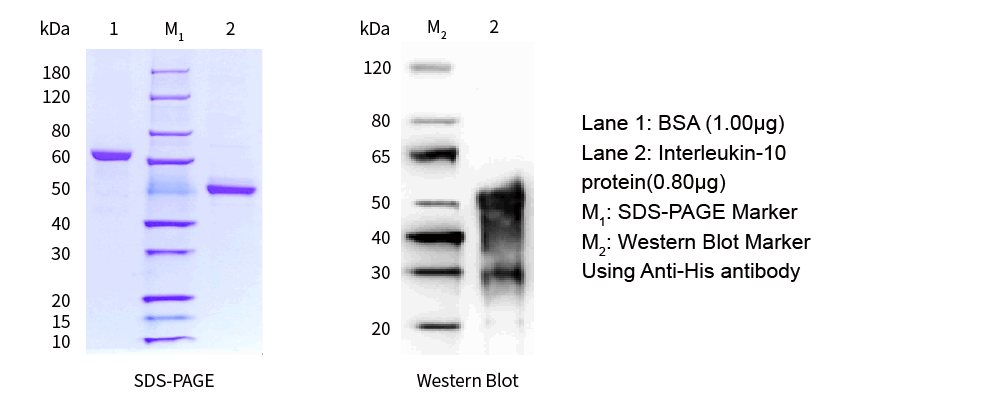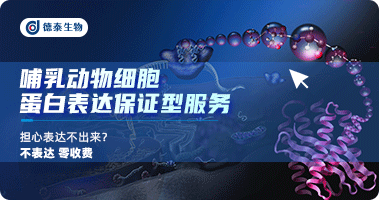
| ĂűłĆ | Interleukin-10 Protein |
| ´ż¶Č | >90% |
| ÄÚ¶ľËŘ | <1 EU/mg |
| ËŢÖ÷ϸ°ű | HEK293 |
| ĐňÁĐ | MHGSALLCCCLVLLAGVGASRHQSTLLEDDCTHFPASLPHMLRELRAAFGRVKIFFQMKDKLDNILLTGSLLEDFKSYLGCQALSEMIQFYLEEVMPRAENHDPDIKNHVNSLGEKLKTLRLRLRLRRCHRFLPCENKSKAVEQVKSAFSKLQEKGVYKAMSEFDIFINYIETYMTMRMKI |
| »ůŇňĂű | IL10 |
| Uniprot ID | P48411 |
| ÎďÖÖ | Canis lupus familiaris(Dog) |
| ˛úĆ·ĐÔ×´ | Liquid |
| »şłĺŇş | 1ˇÁPBSŁ¬pH7.4 |
| ´˘´ć·˝Ę˝ | -80 ˇć packaging and storage to avoid repeated freezing and thawing. |
| SDS-PAGE &WB |

|
Major immune regulatory cytokine that acts on many cells of the immune system where it has profound anti-inflammatory functions, limiting excessive tissue disruption caused by inflammation. Mechanistically, IL10 binds to its heterotetrameric receptor comprising IL10RA and IL10RB leading to JAK1 and STAT2-mediated phosphorylation of STAT3. In turn, STAT3 translocates to the nucleus where it drives expression of anti-inflammatory mediators. Targets antigen-presenting cells (APCs) such as macrophages and monocytes and inhibits their release of pro-inflammatory cytokines including granulocyte-macrophage colony-stimulating factor /GM-CSF, granulocyte colony-stimulating factor/G-CSF, IL-1 alpha, IL-1 beta, IL-6, IL-8 and TNF-alpha. Interferes also with antigen presentation by reducing the expression of MHC-class II and co-stimulatory molecules, thereby inhibiting their ability to induce T cell activation (By similarity). In addition, controls the inflammatory response of macrophages by reprogramming essential metabolic pathways including mTOR signaling (By similarity).


